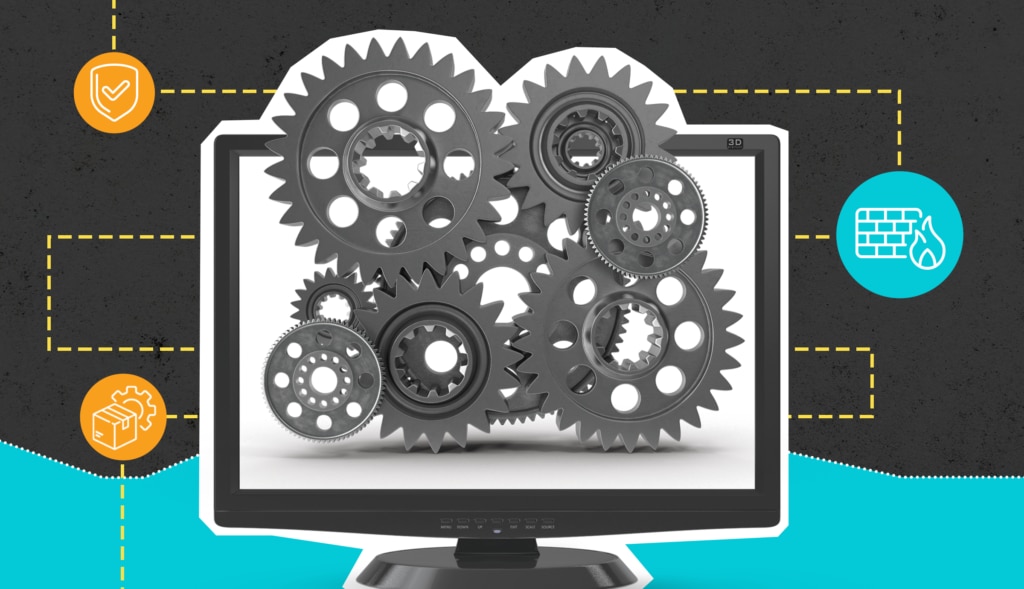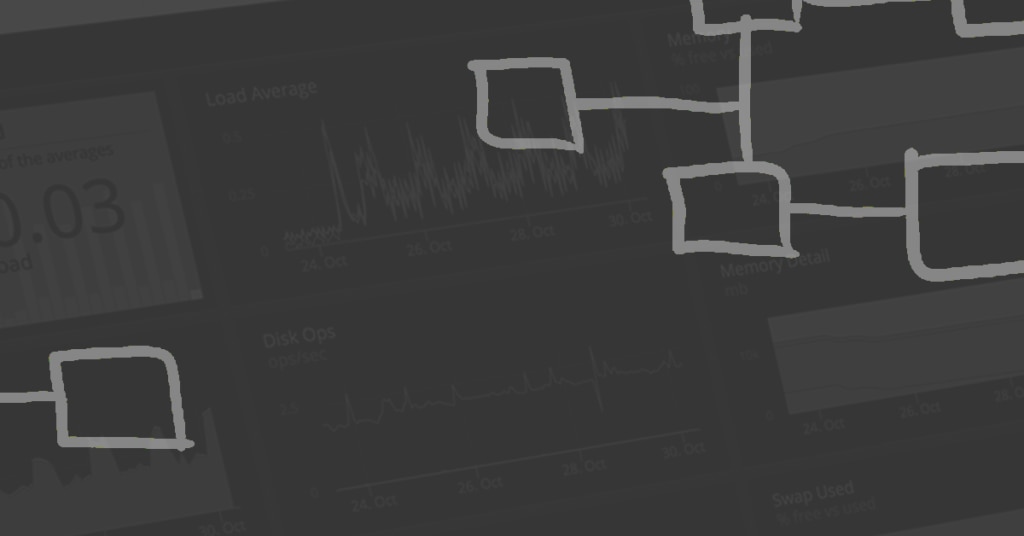When I began my career in IT more than two decades ago, most organizations had multiple silos of application development teams. Each team would be responsible for a single application or sometimes two and nothing else. Developers would spend days, weeks, or months working on a single release containing countless enhancements and improvements. Release day was a pressure cooker, with IT pros sometimes working on the deployment overnight, hoping nothing went disastrously wrong. And those teams deployed to work production had little to zero working knowledge of all the changes being implemented.
As technology evolved, the ability to bring developers and IT operations together into a more seamless workflow emerged, called “
DevOps.” This collaboration allowed for smaller and faster deployments, resulting in high-quality, less error-prone releases.
The downstream
benefits of leveraging DevOps were customers getting improved products in days or weeks, not months or years, which we saw provided a significant positive effect on the company’s bottom line.
Now, with a more streamlined approach to deployments, tools such as Terraform or Azure Bicep can be used to dynamically deploy services along with infrastructure. However, managing this orchestration requires significant automation—there are too many moving pieces for humans to manipulate, no matter how skilled or experienced. In this post, I’ll dive into how the strength of DevOps automation lies in handling repetitive tasks while reducing the dependency on manual intervention.
What Are the Benefits of DevOps Automation?
Automation has multiple benefits beyond the speed of release. When large deployments are released to production,
monitoring hooks typically need to be put into place, and automation can be utilized to ensure all the appropriate monitoring tools get deployed.
Automation also helps reduce errors. In any deployment, big or small, less human interaction correlates with greater odds of success. Removing the human element is one of the most considerable gains automation brings to the table.
Do you like consistency and standardization? If you work in IT, the odds are you do. Automation within the DevOps realm helps ensure consistent and repeatable releases to a production environment.
This consistency minimizes human errors (since fewer people are involved), as well as the side benefit of a better work-life balance for staffers. Fewer errors can translate to fewer after-hours responsibilities, helping IT workers be more productive and satisfied—leading to lower turnover. This makes DevOps automation a win-win for organizations. How Do You Automate DevOps?
Back in the day, the idea of infrastructure as code (IaC) wasn’t a concept. For any given release cycle, the hardware required to support the application had to be put into place. I remember having to submit requests to the operations teams to reacquisition the appropriate hardware—by the time the hardware arrived, it was usually already outdated.
Now, IaC is what provides much of this automation. With modern technology, especially in the cloud realm, most resources can be defined in a way that can be interpreted by scripting languages. These documents are usually in JSON format, a key-value pair type of construct, allowing developers or system administrators to construct templates describing how the resources should behave.
To illustrate, here’s an example of a JSON template for an Azure SQL Database. It defines the region as well as the service tier of the database. The definition this document defines now becomes the source code for the resource itself, as shown in Figure 1.
 Figure 1: The source code from a JSON template for an Azure SQL Database.
Figure 1: The source code from a JSON template for an Azure SQL Database.
Since the document is now source code, it can be incorporated into a standard
continuous integration/continuous delivery (CI/CD) pipeline, including checking templates into version control (i.e., source control) and including it in the build and deploy process.
And DevOps tools like Puppet, Jenkins, Git, GitHub, and Microsoft Azure DevOps Services can all incorporate this template into their own unique ecosystems. This allows for the resource to be a part of the application lifecycle.
The rest of the process is the same continuous integration and deployment methodology we’ve been using with applications, incorporating the hardware resources (i.e., operations) side of things into the pipeline.
How Can DevOps Automation Help in Testing?
Another facet of DevOps automation is the ability to incorporate testing automation for the operational components. Previously, this would have been a labor-intensive, manual process prone to error. Now, appropriate testing can be done on the resource side of things to ensure no bottlenecks are created. This reinforces the advantages of DevOps automation in the overall DevOps lifecycle.
Many organizations use automation in this same manner to maintain and provision Kubernetes and Docker environments. Each container is treated as source code and released right alongside the respective applications.
All these changes are tightly integrated into a continuous workflow. Usually, this involves a source control repository of some type in conjunction with a build process, automated testing, feedback, and subsequent deployment to production.
This production pipeline can involve continuous delivery, which stops prior to actual production for purposes of verification. Another option is continuous deployment, which releases directly to production after satisfying all applicable automated testing.
Both methods have their merits. Continuous delivery is challenging to implement correctly, requiring a hefty investment in testing and control mechanisms. Because of this, most organizations instead favor continuous deployment, as it produces similar results with better quality.
How Observability Centralizes Insights vs. DevOps Automation Tools
In the era of hybrid cloud environments, DevOps engineers, IT operations, and any application teams following an agile methodology often find themselves using various DevOps automation tools and other toolchains to try to individually improve their software development lifecycles, increase application performance, and streamline their DevOps pipeline. However, using these disparate DevOps automation tools can inadvertently reinforce the working silos agile methodology aims to help solve as teams often struggle to normalize data to create a unified performance view.
SolarWinds Observability Self-Hosted (formerly known as Hybrid Cloud Observability) is designed with the needs of DevOps, software development, security, and other IT operations (ITOps) teams in mind. SolarWinds Observability Self-Hosted (formerly known as Hybrid Cloud Observability) can help organizations improve cross-departmental collaboration by simplifying administration via a single pane of glass for an entire ecosystem, regardless of where components may reside. Having teams work within one solution as the source of truth not only can help reduce tool sprawl but ultimately allow for more informed, coordinated, and effective response and planning.
With the unceasing expansion of technology allowing for faster deployments, having the appropriate tools in place isn’t a luxury, but a necessity. See how SolarWinds Observability Self-Hosted (formerly known as Hybrid Cloud Observability) is built to make your teams more empowered, productive, and agile by
downloading a free trial.
 Figure 1: The source code from a JSON template for an Azure SQL Database.
Since the document is now source code, it can be incorporated into a standard continuous integration/continuous delivery (CI/CD) pipeline, including checking templates into version control (i.e., source control) and including it in the build and deploy process.
And DevOps tools like Puppet, Jenkins, Git, GitHub, and Microsoft Azure DevOps Services can all incorporate this template into their own unique ecosystems. This allows for the resource to be a part of the application lifecycle.
The rest of the process is the same continuous integration and deployment methodology we’ve been using with applications, incorporating the hardware resources (i.e., operations) side of things into the pipeline.
Figure 1: The source code from a JSON template for an Azure SQL Database.
Since the document is now source code, it can be incorporated into a standard continuous integration/continuous delivery (CI/CD) pipeline, including checking templates into version control (i.e., source control) and including it in the build and deploy process.
And DevOps tools like Puppet, Jenkins, Git, GitHub, and Microsoft Azure DevOps Services can all incorporate this template into their own unique ecosystems. This allows for the resource to be a part of the application lifecycle.
The rest of the process is the same continuous integration and deployment methodology we’ve been using with applications, incorporating the hardware resources (i.e., operations) side of things into the pipeline.




